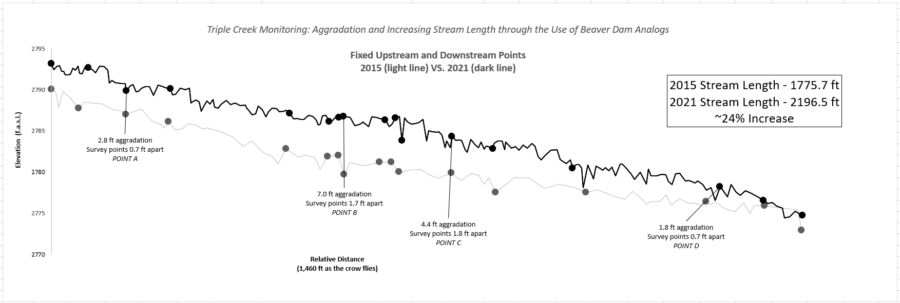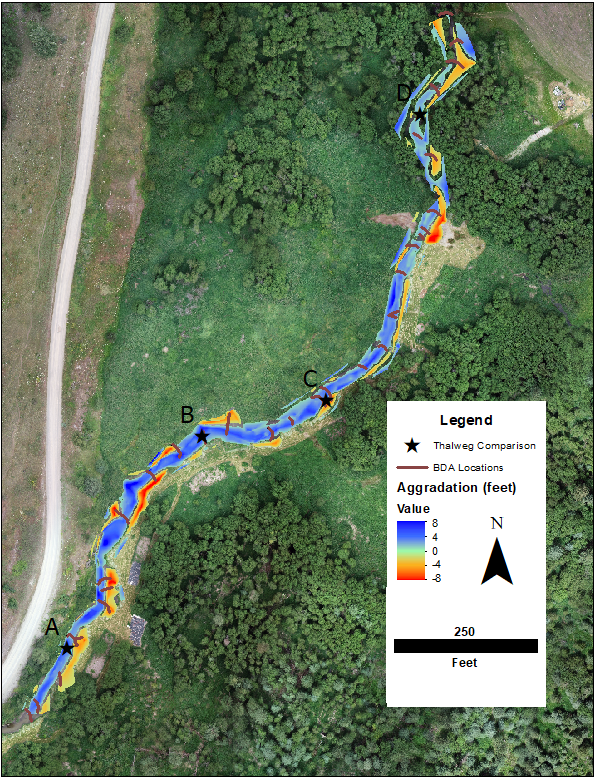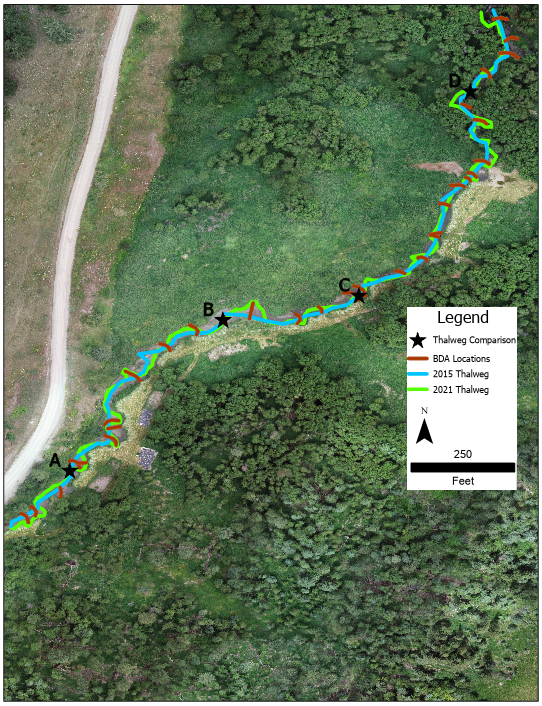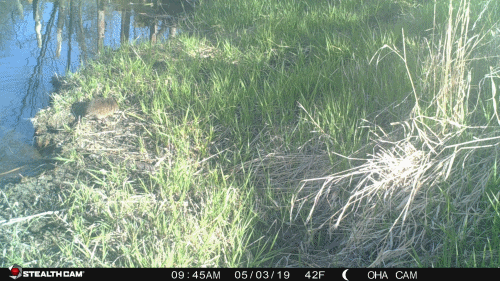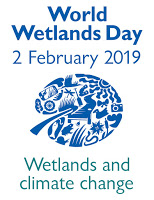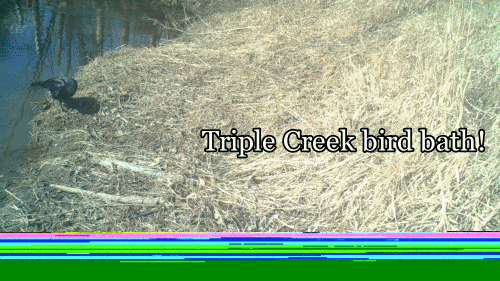Each spring since 2016, students from the Tonasket Outreach Program have been invited to participate in Triple Creek restoration project. During the first field trip, a group of 23 students of all ages, and six adult volunteers came out to the site and helped with planting trees and shrubs, building perches for birds of prey, taking photos to monitor the site, and participating in educational activities that illustrated the connections between producers and consumers in the web of life.
Participation at Triple Creek offers a bounty of ongoing learning experiences for the students of Outreach. Their classroom teacher, Sonja, has been leading students in research on riparian buffer zones. Grades 3-6 have been learning about photo monitoring, and helping to organize documentation of the project. They have also been able to celebrate the return of beaver to the creek! There will be a variety of opportunities for students of all ages to be involved throughout the school year, culminating in a return field trip in the spring. At that time students observe major changes that have occurred in the stream since their previous visit. They will see the instream structures that OHA and our team have constructed, and the ways in which these structures have mimicked beaver dams.
In 2019, the Outreach students are merging music and science with OHA’s Conservation Coordinator, Julie Vanderwal, as they compose a song to tell the story of change at Triple Creek. Later this spring, Outreach took another field trip to the project site to observe its improvement and to help plant more willow saplings in the riparian buffer zone around the streams. OHA appreciates all the work the Outreach teachers have done to coordinate these valuable experiences for the students, and the many volunteers who make the field trips possible.
This exposure offers valuable insight into multiple facets of science and study. They have been introduced to various fields and disciplines that can inspire and expand their opportunities for the future, including wildlife biology, watershed ecology, botany, geology, and field studies. They are learning about data collection and analysis, record keeping, wildlife photography, and the scientific method of observation. By maintaining connectivity throughout this process we are encouraging an ongoing relationship with these local ecosystems that will last beyond the memory of a single field trip, and encourage stewardship in our future generations.
